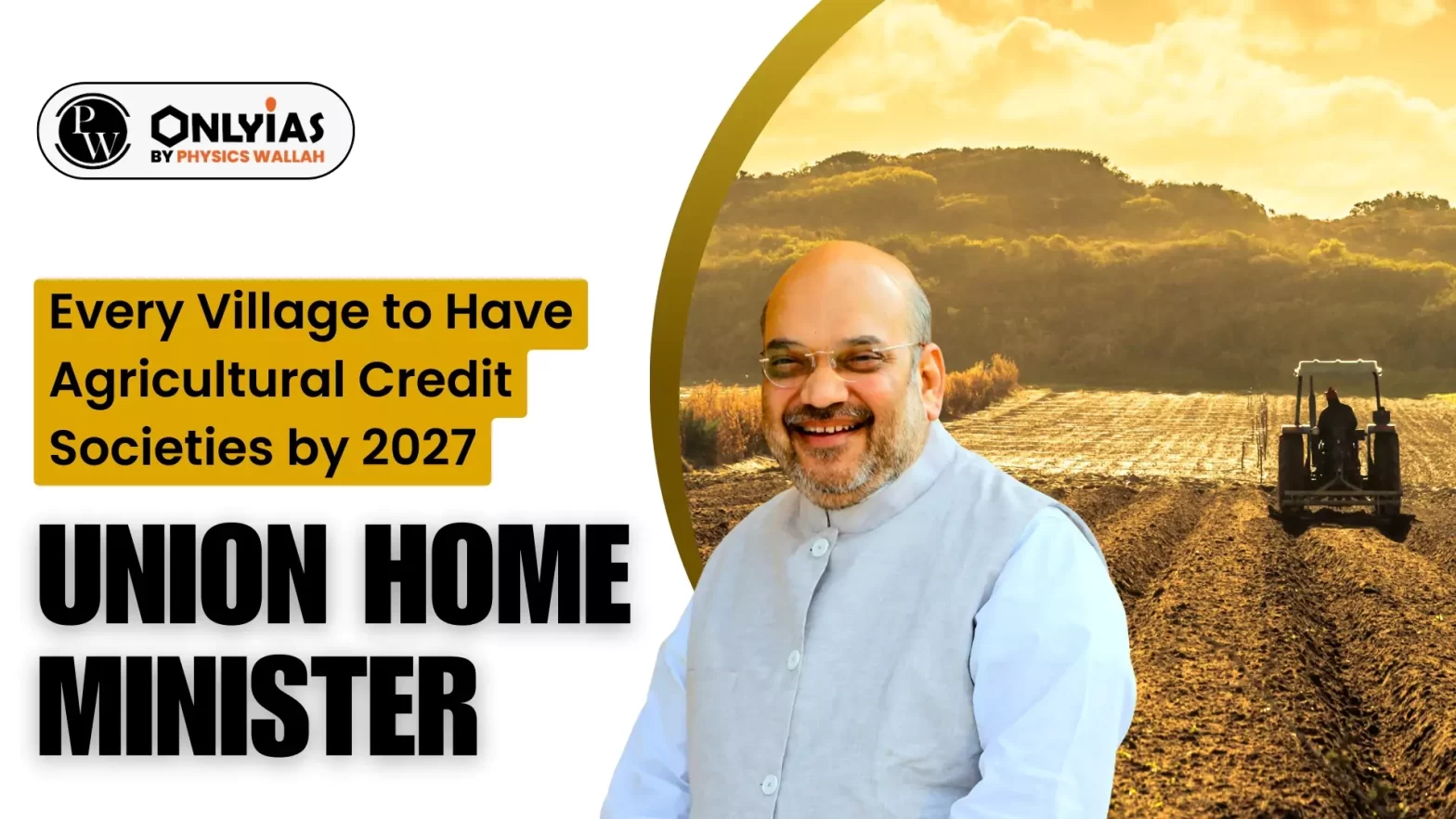![]() 9 Mar 2024
9 Mar 2024

This Article is based on the news “Every village to have agricultural credit societies by 2027, says Amit Shah” which was published in the Indian Express. Central government targets every village to have agricultural credit society by 2047.
| Relevancy for Prelims: Primary Agricultural Credit Societies (PACS), World’s Largest Grain/ Food Storage Plan, Minimum Support Price (MSP), Farmers Protest 2.0, and Union Budget 2024 For Agriculture Sector
Relevancy for Mains: Primary Agricultural Credit Societies in India: Functions, Significance, Challenges, and Way Forward. |
|---|
National Cooperative Database
|
|---|
| Prelims PYQ (2021):
In the context of India’s preparation for ClimateSmart Agriculture, consider the following statements: 1. The ‘Climate-Smart Village’ approach in India is a part of a project led by the Climate Change, Agriculture and Food Security (CCAFS), an international research programme. 2. The project of CCAFS is carried out under Consultative Group on International Agricultural Research (CGIAR) headquartered in France. 3. The International Crops Research Institute for the Semi-Arid Tropics (ICRISAT) in India is one of the CGIAR’s research centres. Which of the statements given above are correct? (a) 1 and 2 only (b) 2 and 3 only (c) 1 and 3 only (d) 1, 2 and 3 Ans: (d) |
|---|
| Must Read | |
| NCERT Notes For UPSC | UPSC Daily Current Affairs |
| UPSC Blogs | UPSC Daily Editorials |
| Daily Current Affairs Quiz | Daily Main Answer Writing |
| UPSC Mains Previous Year Papers | UPSC Test Series 2024 |
<div class="new-fform">
</div>
